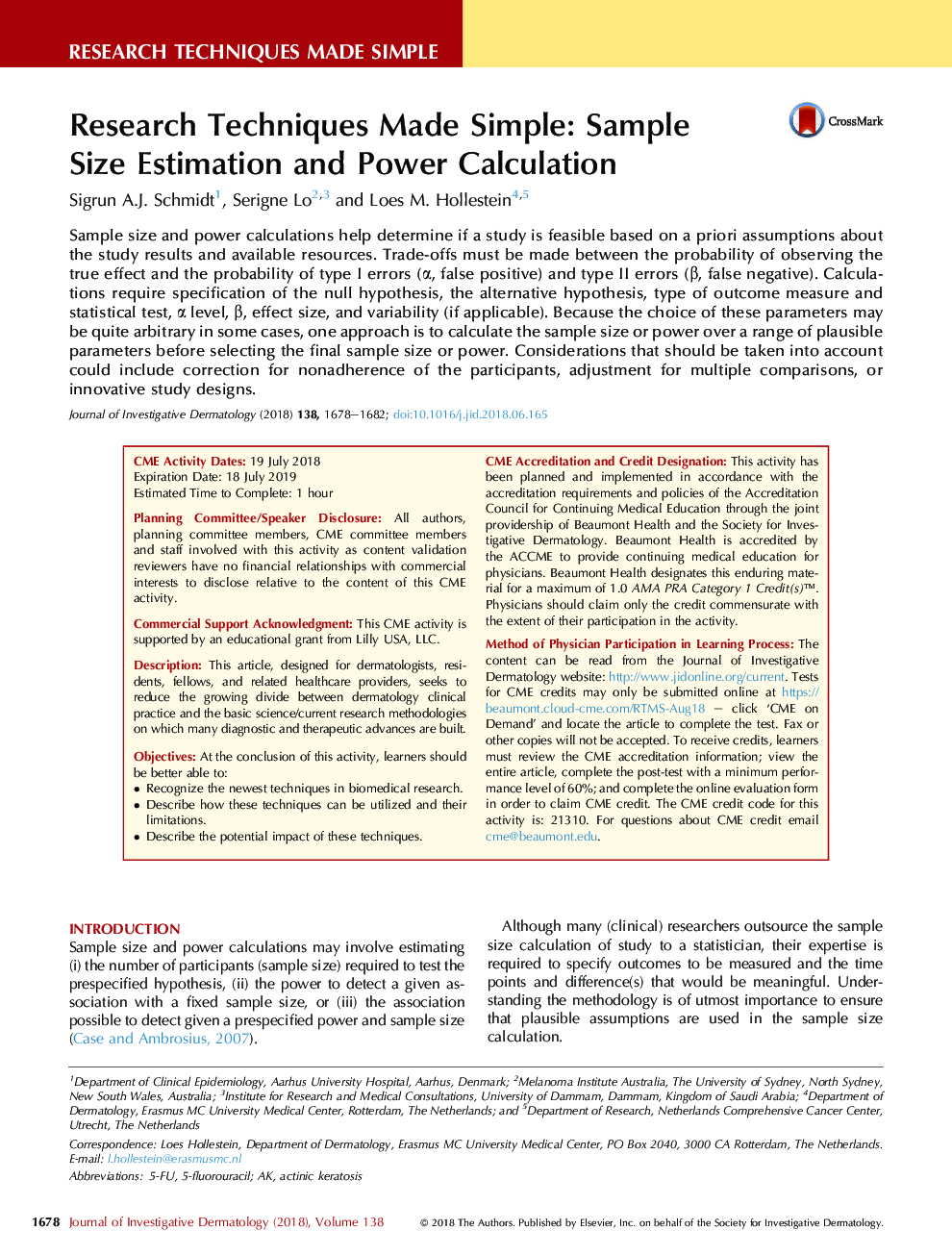| Article ID | Journal | Published Year | Pages | File Type |
|---|---|---|---|---|
| 8715794 | Journal of Investigative Dermatology | 2018 | 5 Pages |
Abstract
Sample size and power calculations help determine if a study is feasible based on a priori assumptions about the study results and available resources. Trade-offs must be made between the probability of observing the true effect and the probability of type I errors (α, false positive) and type II errors (β, false negative). Calculations require specification of the null hypothesis, the alternative hypothesis, type of outcome measure and statistical test, α level, β, effect size, and variability (if applicable). Because the choice of these parameters may be quite arbitrary in some cases, one approach is to calculate the sample size or power over a range of plausible parameters before selecting the final sample size or power. Considerations that should be taken into account could include correction for nonadherence of the participants, adjustment for multiple comparisons, or innovative study designs.
Keywords
Related Topics
Health Sciences
Medicine and Dentistry
Dermatology
Authors
Sigrun A.J. Schmidt, Serigne Lo, Loes M. Hollestein,
